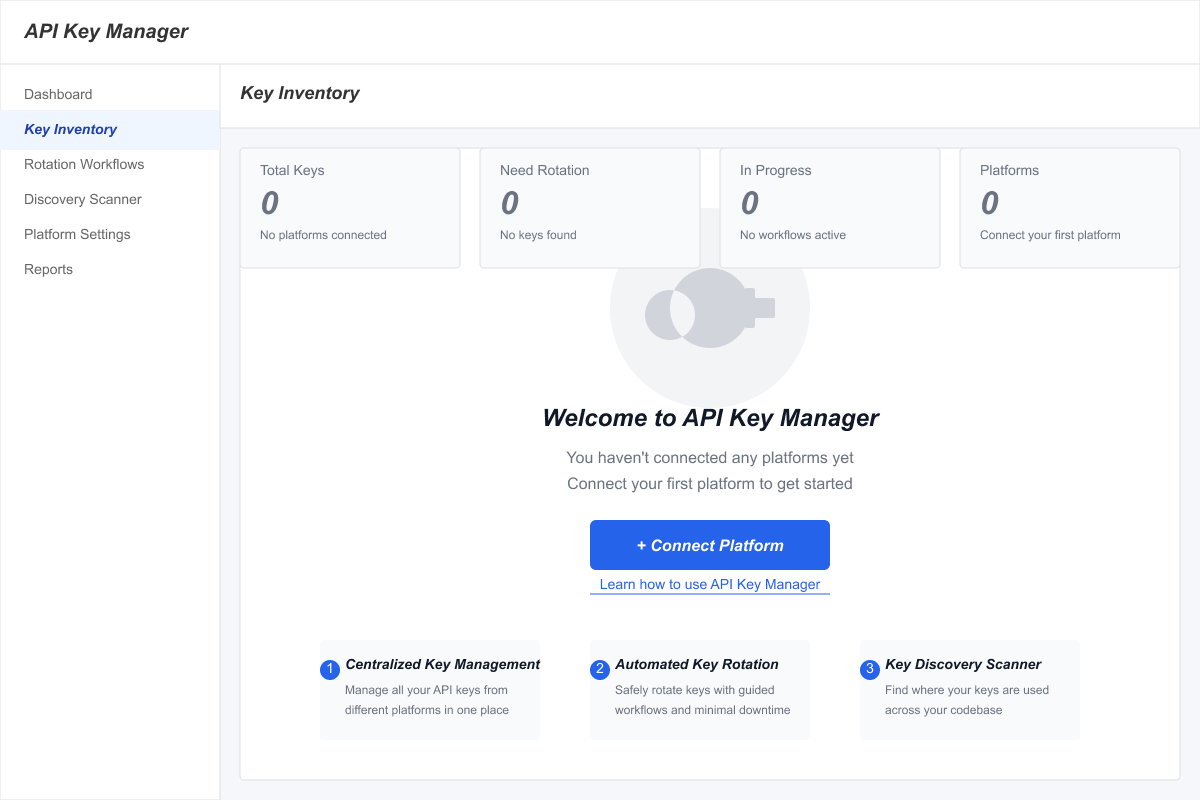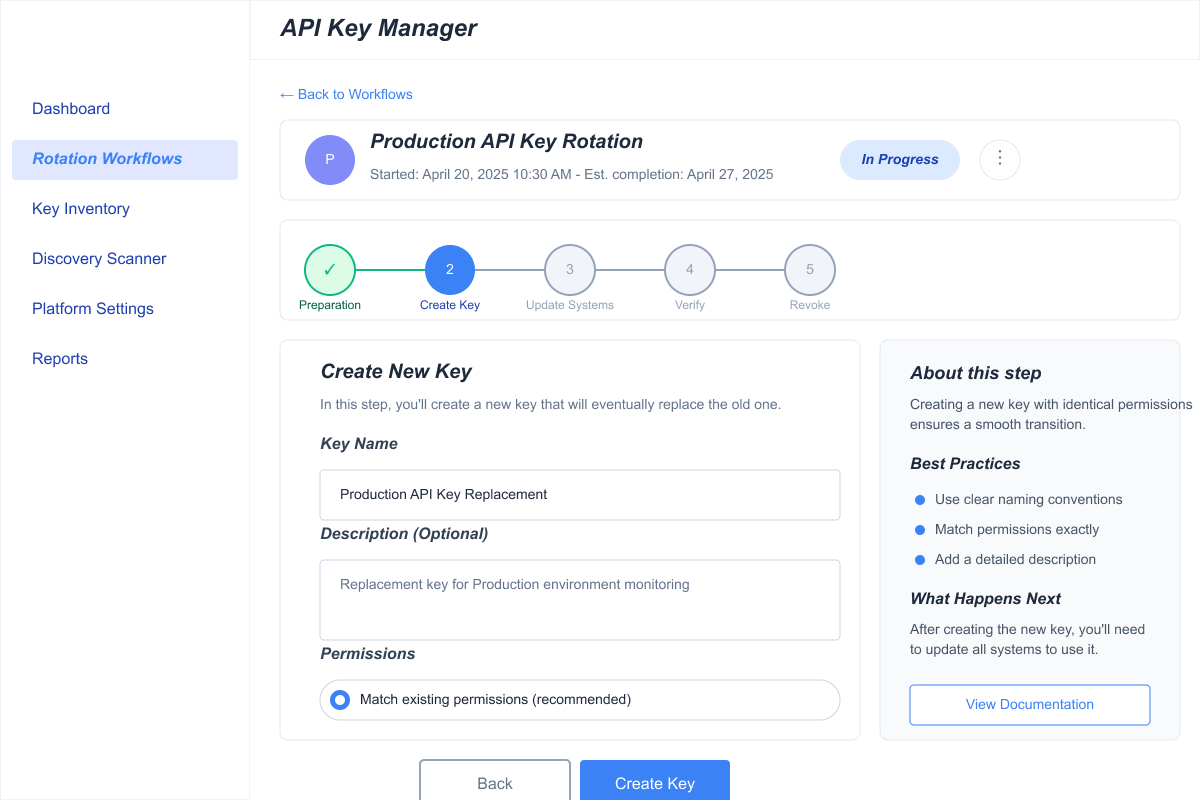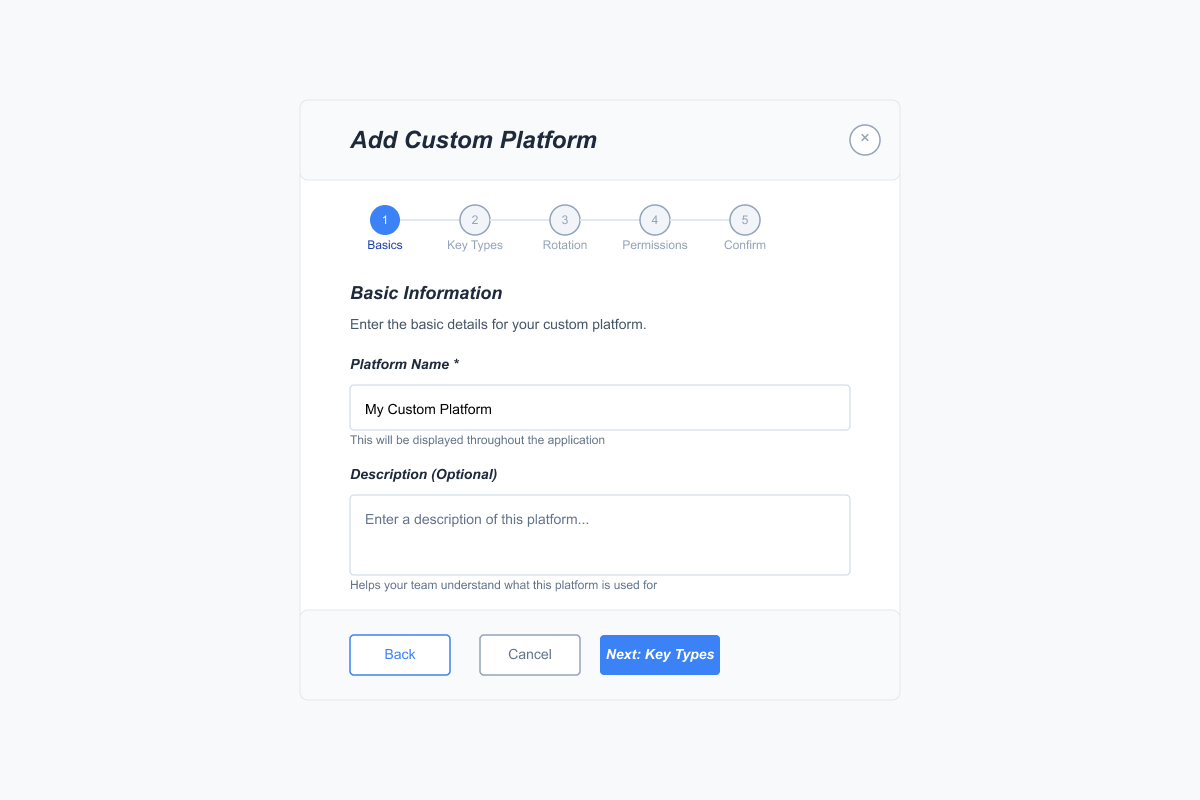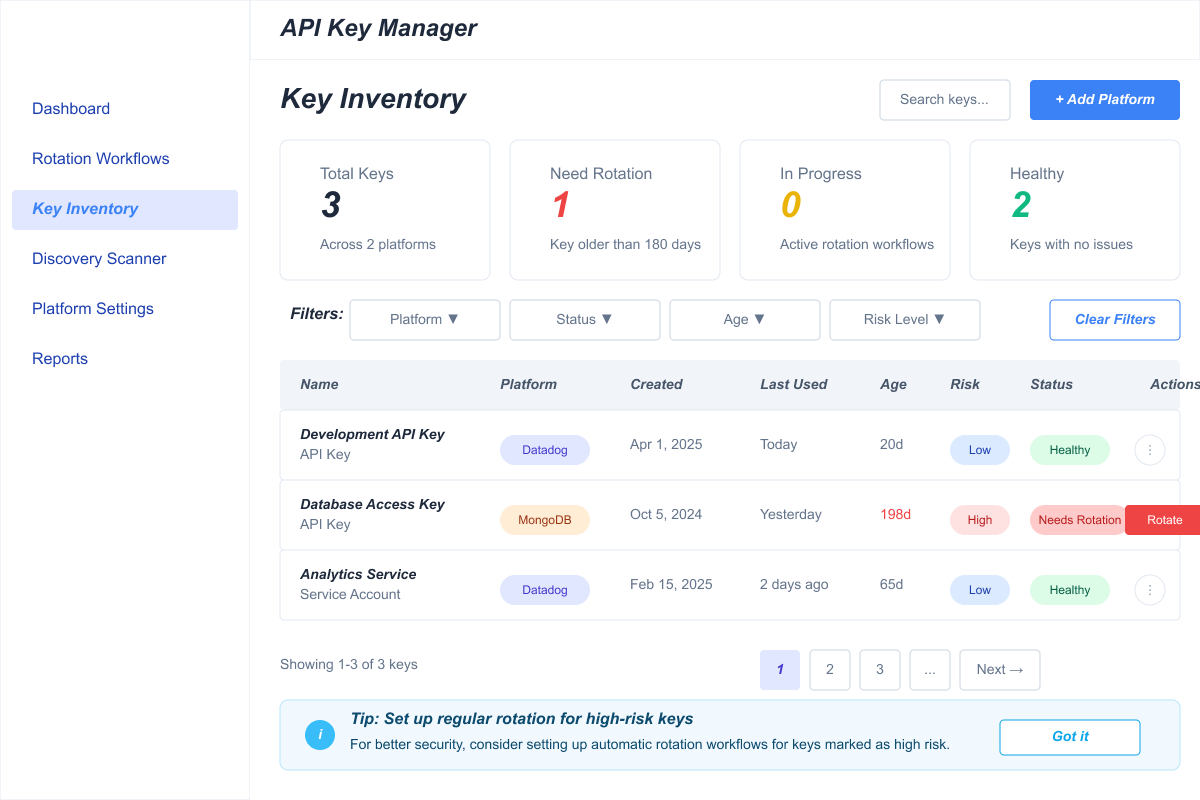Keystrok: Identifying and Solving a $2.3B Security Gap
Self-hosted, open-source API key management that developers actually want to use

From Observation to Opportunity
I identified an underserved market need through direct developer feedback, designed and built a solution that reduces API key management time by 85%, and validated it with 50+ potential users. This side project demonstrates my ability to spot opportunities, execute end-to-end product design, and bridge technical complexity with human-centered solutions.
The $2.3B Problem Nobody Was Solving Right
Market Context
- Security breaches involve compromised credentials 73%
- Enterprise API management tools cost per year $50-200K
- Small development teams globally lack solutions 4.2M
- Existing tools are overcomplicated and overpriced "Swiss army knives"
Understanding Developer Pain

Engaging with user base across developer platforms
Quantitative Research
I surveyed 87 developers across Reddit, Lemmy, and professional networks:
Qualitative Insights
Through 12 in-depth interviews, I identified three key user segments:
Solo Developers
Need simple, free solutions without complexity overhead
Small Teams
Want collaboration features without enterprise complexity
Security-Conscious Startups
Require audit trails but can't afford enterprise tools
Security Through Simplicity
10-Second Overview
Critical information visible instantly. No drilling down through menus to understand system health.
Progressive Disclosure
Complexity available when needed, but never forced. Simple tasks stay simple.
Proactive Security
Guide users toward best practices through smart defaults and gentle nudges.
Developer Aesthetics
Dark mode first, information dense, terminal-inspired design that feels familiar.
Key Design Decisions
Visual Hierarchy Through Color
This simple system reduced time-to-action by 85% in testing
Platform-Centric Organization
Instead of a flat list, I grouped keys by platform (AWS, Stripe, GitHub) because developers think in terms of services, not individual keys.
One-Click Actions
Every key shows its most likely next action: Expired → Rotate, Expiring → Set reminder, Active → Copy to clipboard
The Interface




"Finally, someone who understands we don't need another platform - just key management done right. The visual hierarchy instantly shows me what needs attention. It's like Grafana for API keys."— Senior DevOps Engineer, Beta Tester
Beta Testing Results
50 developers tested the prototype over 4 weeks
Business Validation
- 15 companies expressed interest in enterprise features
- 3 offers to sponsor open-source development
- 500K+ potential market of small development teams
- 50+ active beta users continuing to use the prototype
Roadmap & Business Model
Why This Matters
Keystrok proves I don't just design interfaces - I identify problems worth solving, validate solutions with real users, and execute with business impact in mind. This is what I bring to senior product design roles.
Key Learnings
About Technical Product Design:
- Developers value focus over features - Do one thing exceptionally well
- Visual design matters in DevTools - Good aesthetics improve adoption
- Open source builds trust - Transparency is crucial for security tools
About Building While Designing:
- Implementation constraints improve design
- Real data exposes edge cases mockups miss
- Community feedback is gold